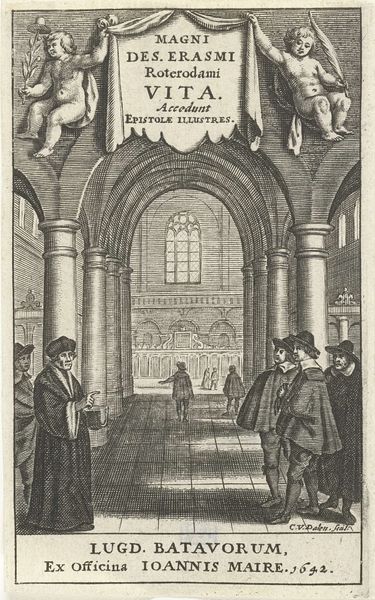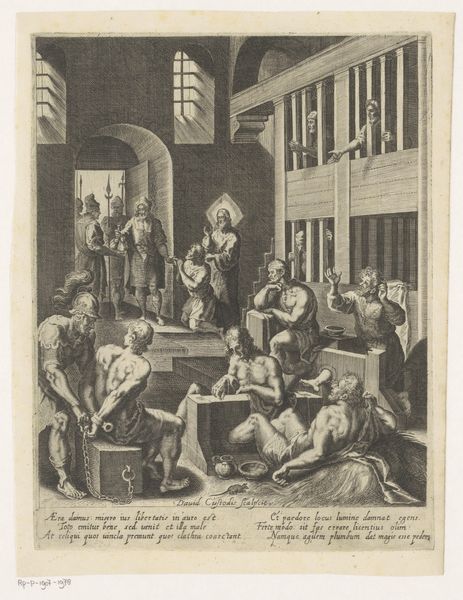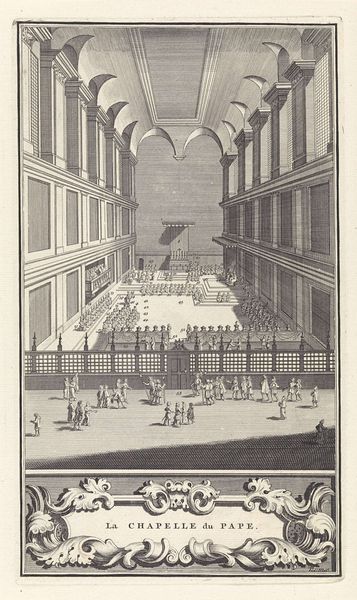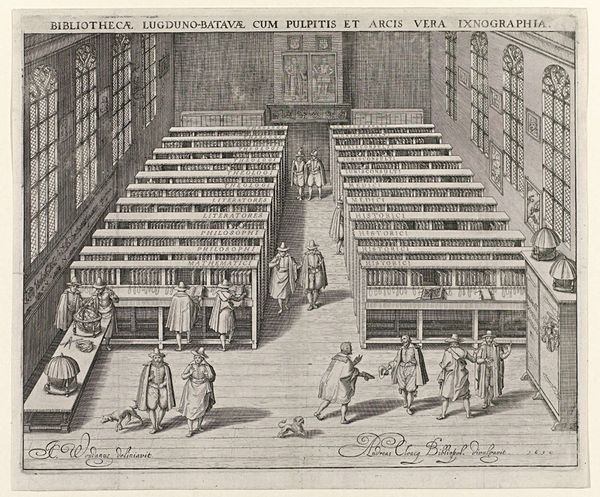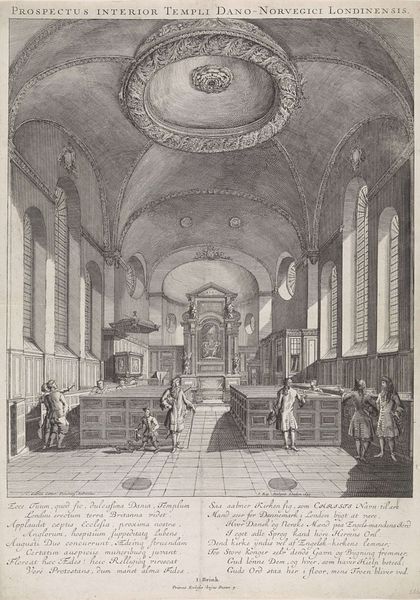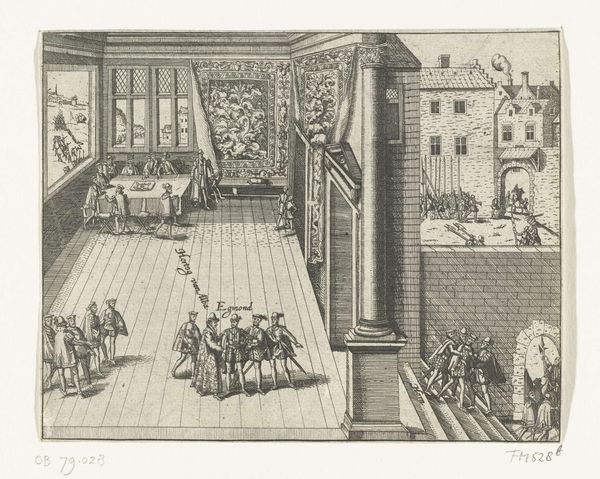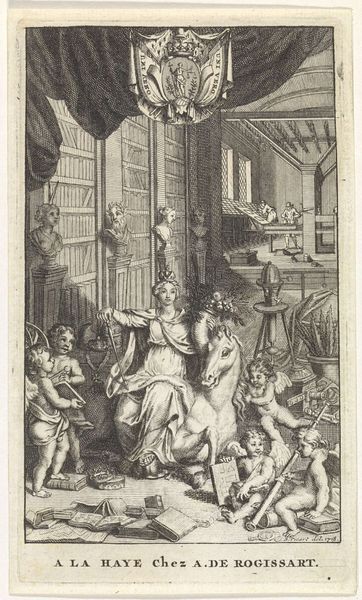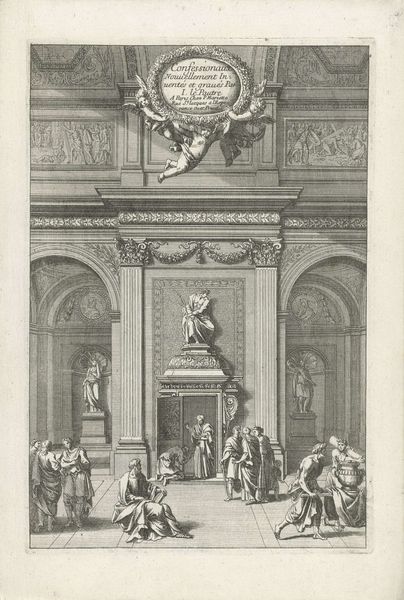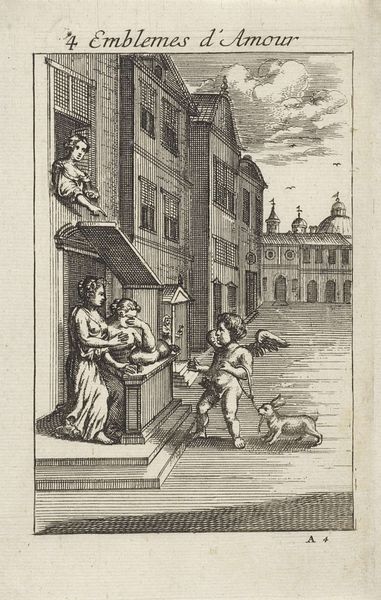
print, engraving
#
portrait
#
baroque
# print
#
old engraving style
#
figuration
#
line
#
islamic-art
#
genre-painting
#
history-painting
#
engraving
Dimensions: height 327 mm, width 219 mm
Copyright: Rijks Museum: Open Domain
Editor: So this is "Penitence by Ashkenazi Jews in the Synagogue," an engraving by Pieter Tanjé, created sometime between 1716 and 1761. The figures almost look like they’re acting out a play, but there’s also a palpable sense of violence and tension. How do you interpret this work? Curator: Well, consider the title itself. "Penitence." Immediately, a cultural script is activated. We see not just a scene, but a ritual. The stark imagery, those starkly rendered stripes indicating the lashes, speaks to me of societal control enacted on bodies, the communal drama reinforcing boundaries, both seen and unseen. What do those blows represent, culturally and psychologically? Editor: That's interesting. So it's not just about individual suffering, but a public demonstration... a kind of performance of regret. Curator: Precisely. Think about the architectural space as a container for these performances. The synagogue becomes more than a house of prayer, but a stage for social and psychological catharsis, laden with symbolic meaning carried through generations. Notice how Tanjé frames this ritual within those precise architectural lines; how does that rigid geometry underscore the message, the power dynamic at play? Editor: I see what you mean. The rigidity of the building contrasts sharply with the chaotic movements of the figures, amplifying the feeling of confinement. Curator: Indeed. The windows, seemingly offering a view out, are barred. Freedom exists but it's obstructed, which mirrors the figures enacting rituals that hold them. What continuities do you think persist into contemporary forms of ritual and societal pressure? Editor: I hadn’t considered the contemporary connections. It really makes you think about how we publicly display or process collective guilt, even now. Curator: Every symbol has a history, a lineage. Recognizing this lineage helps us decode present actions and cultural narratives, which allows us to perceive both ourselves and others. Editor: Absolutely. I'll definitely be looking at engravings—and maybe even performance art—differently now!
Comments
No comments
Be the first to comment and join the conversation on the ultimate creative platform.
